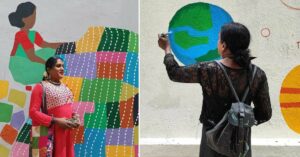TBI Blogs: Meet the Artisan Who Created India’s First Androgynous Idol of Goddess Durga
In the crammed world of clay figurines, Chaina and her retinue from Kolkata, are keeping alive the age-old tradition of modelling goddess Durga.

In the crammed world of clay figurines, Chaina and her retinue from Kolkata, are keeping alive the age-old tradition of modelling goddess Durga.
Grey clouds had started forming in the skies and a lanky chap came running, announcing:“Brishti asche, brishti asche, murti dhukiye nao (Rains are coming, rains are coming, put the idols inside).” And immediately, hundreds of Kumartuli workers started covering their large clay idols in sheets of plastic, taking them inside their dark studios, where they assiduously work day and night under a 250 W bulb.
Like Wes Anderson is to direction and Wordsworth is to romanticism, Kolkata’s Kumartuli is to idol making.
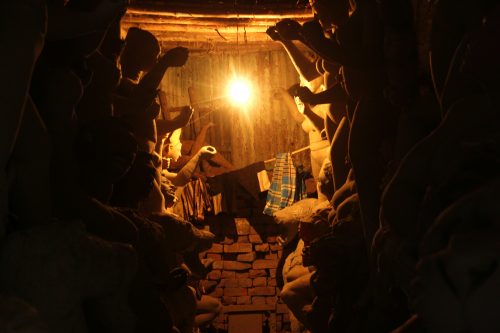
For art zealots, Kumartuli is an amalgamation of artists under the same sky making the same face, most widely known to the world as Goddess Durga. But for the ‘Pals’ of Kumartuli, it is a service to Maa Durga herself.
This simple artistic occupation has given birth to this cramped world of talent where, every year, thousands of idols are made, some of which are even exported to different corners of the world. In the small labyrinth of their studios, goddess Durga takes shape, with her 10 hands, four kids and a demon to slay. And what takes months to be modelled, turns into soil in four days, and thus ‘Dust thou art to dust returnest’.
Amongst the many studios in the Banarmali street, Chaina Pal has gained popularity for two reasons – one for her name and other for her occupation.
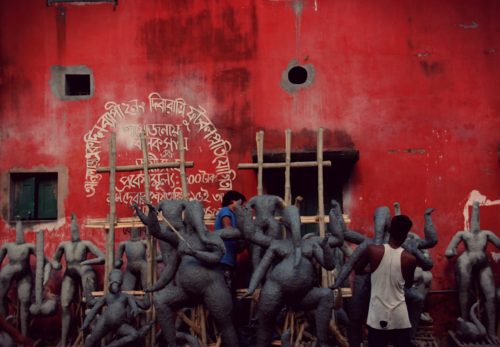
Although art knows no gender, yet only a few women today venture into sculpting Durga idols.
“As far as Kumartuli is concerned, there are only five to six women artists here,” says Ranajit Sarkar, secretary of the Kumartuli Shilpi Samity.
However, Chaina did not follow the rules of gender differentiation, and has been part of this occupation ever since she was 17. She alone broke the chasm of disparity and created an audience for herself and Kumartuli.
Her story begins in 1994 when her ailing father left no heir to the 70-year-old idol making tradition.

Chaina says, “I had two brothers who did not want to enter this profession and three sisters, who had no interest in sculpting, so I took the onus upon me.”
It wasn’t easy for Chaina to challenge the prevalent male dogma of the society and make a niche of her own. When she entered the shop, her first challenge was to learn the art and create a customer base, which she knew would be lost after her father passed.
“A person can learn anything and everything with dedication, it may take time, but one learns it,” says Chaina.
Despite being a newcomer in the profession, she now holds the title of Dashabhuja (one with 10 hands) for her incredible agility in handling both, her studio and her house, at the same time.

This kind of stardom doesn’t sway the humble Chaina. She upholds the traditional style of modelling the idols and prefers them like her father and grandfather, even though these styles have now become passé.
“I like to see Maa Durga and her entourage in the same wooden plank, and that’s how I make them, unlike others, who have fallen to new designer ways of making idols,” she says. “I have not fallen prey to capitalism; for me, my workers are all the same and when we are done with making idols, we all take a vacation and travel together in the month of November.”
Chaina has eight artisans working for her.
While Chaina’s eminence has spread through the sweet smell of the Ganges soil, she has also had to face some criticism.
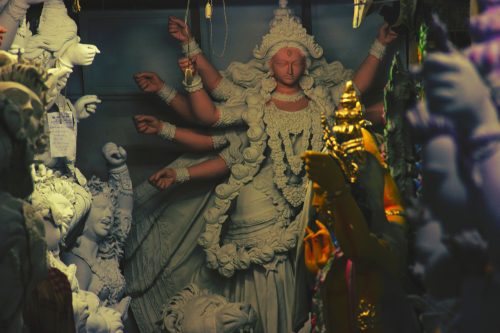
Last year, she made an unusual Durga idol ‘Ardhanarishwar,’ an androgynous sculpture for the transgender community, one of the first such idols in India. While the media praised the bold move on behalf of the transgender community, locals condemned the structure and Chaina.
Chaina however, remains undeterred: “Everyone has the right to pray and preach, and so does the transgender community. When they requested me to make it, how could I have refused?”
Bhanu Naskar, spokesperson of the transgender community says, “We wanted a woman to do this idol for us, and hence we approached Chaina di. While everybody rejected our proposal since it was the eleventh hour, she readily took it up, and completed it with her own hands.”
Bhanu went on to add, that although there are other woman artists as well, it was Chaina Pal who first started working in the industry and paved the way for other women to enter the field.
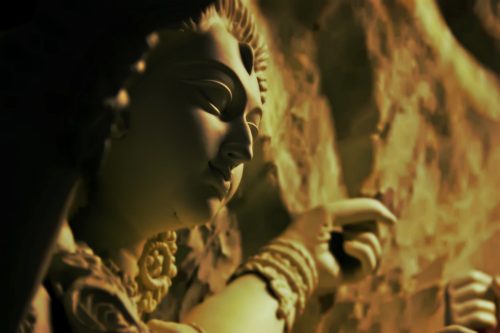
With only a handful of woman artist in the domain, “there is little scope of training more people,” says Rananjit. Due to unavailability of proper space and crammed up studios, artists are not able to work properly and hence, young generations are reluctant to come and join them.
Cooped up somewhere in the maze of Kumartuli, women are overshadowed by shirtless, sweating men who proudly wield their brushes like armours, as the home-makers stay away, unlike Chaina who although shy, has boldly displayed her art beyond Kumartuli.
Before I leave Kumartuli, my reluctant self couldn’t help but ask Chaina what does her name mean? She laughed hysterically and said, it means ‘I don’t want’ in Bengali. Being the fourth girl child in the family, Chaina’s mother named her so, to stop the cursed birth of another girl child. And while her mother did not want another girl child, at present the octogenarian lives with her daughter Chai-na.
Reminiscing Chaina says, “Now times have changed, this unwanted name has brought me so much fame.”
With dusk, distant conk shells and Dhak could be heard. Taking a chai break, an artist intoned something that reverberates in the heart of every Bengali as Durga puja comes closer, “Dhak bajche, maa asche” (As the dhak beats, Durga Maa is coming).
Want to cover inspiring stories of change and make a substantial difference in the social sphere? Then click here to join the Milaap Fellowship Program.
Like this story? Or have something to share? Write to us: [email protected], or connect with us on Facebook and Twitter (@thebetterindia).
This story made me
- 97
- 121
- 89
- 167
Tell Us More
We bring stories straight from the heart of India, to inspire millions and create a wave of impact. Our positive movement is growing bigger everyday, and we would love for you to join it.
Please contribute whatever you can, every little penny helps our team in bringing you more stories that support dreams and spread hope.







